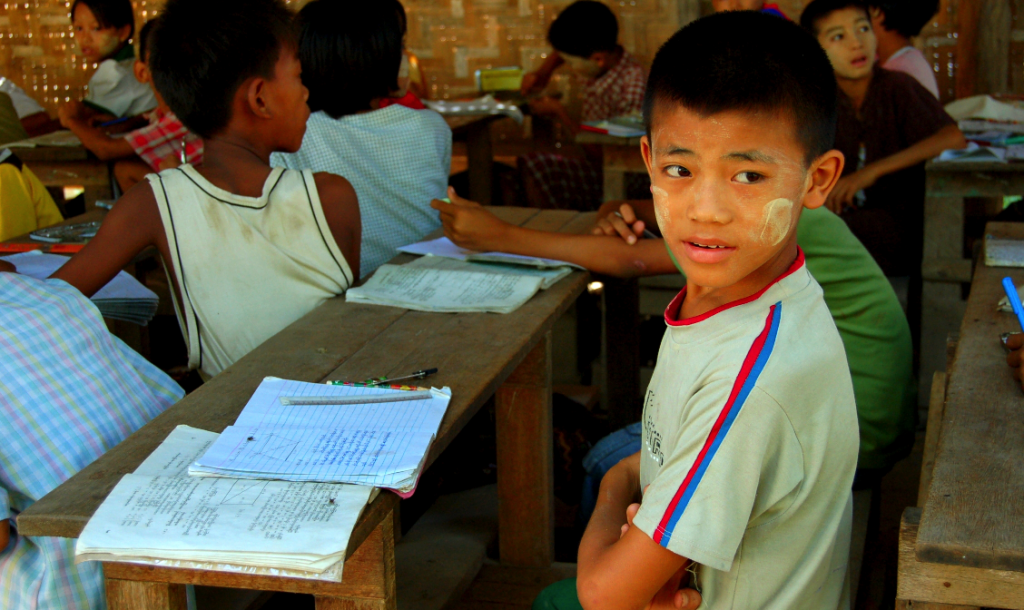How inspiration and creativity is vital for Myanmar’s education system.
My trainee turns to me with a glowing smile. “They were engaged Teacher; I saw it!” he half-whispers, as though exclaiming loudly would break the magic and lead our class of 20 students to lose focus.
In a remote village tucked away near Rakhine State’s border with Bangladesh, students are more engaged with the raging conflict between the government and Muslim population than their lessons. Class here follows the boring and formulaic script that is doled out all across Myanmar. Teachers stand at the front blandly dictating both the questions and answers from government issued textbooks that depict all ethnicities living together in harmony.
There is no attempt to spark their interest at the start of the lesson. The teacher enters, the students stand and chant a greeting. When the class finishes, the students stand once again to thank the teacher. At no point are the students challenged to think, only being allowed to respond in unison. Good students sit at the front to be heard. Bad students at the back barely bother to utilise their vocal chords as they stab each other or the flimsy bamboo floor with pencils and the occasional pair of scissors. This is not learning; it is merely babysitting.
But this is not so for my class. I am training a local teacher to teach in a much more engaging way than anything previously seen in Myanmar. Gathering up an armful of leaves, twigs, flowers and straw before a room of bewildered ninth-graders, the local teacher looks on with a mix of horror and amusement. I proudly present the objects at the front of the room, piece-by-piece. In English, I recite ‘In my village, there are leaves / there are flowers.’ The students are bewitched, glued to the items in my hand, eyes big from wonder at the outside coming in. Soon they started to produce the language that I have modeled for them.
It quickly became apparent this spell was temporary. The students have not been properly trained to learn their entire lives — they are too used to switching off and not engaging. They rote learn material for their final matriculation exam in grade 11. Each year, they have end of grade tests set by local teachers, and for a fee the answers can be purchased in advance for the students to memorise.
Due to a lifetime of total and utter disengagement, students in this remote monastic school display learning behaviours that would warrant medication in richer countries. Government schools are burgeoning with huge classes of over 50 students; many of whom are lucky if they can even see or hear the teacher.
We need to set boundaries and routine. Each lesson I was very strict about having a strong captivating start. This was followed by a steady scaffolding leading out to a less controlled activity to finish. This engagement process took about three weeks. Afterwards, the students would sit in quiet anticipation waiting for the teacher to begin and group movement became a useful teaching tool instead of a headache inducing nightmare.
Over the two months I have been training in this small village, we have seen a group of children transform from uninterested and destructive to fully engaged. My local teacher is now able to spot changes in student attention levels. He now knows when they are bored and he is able to quicken his pace or move to the next activity before he loses too many of the cohort. He is amazed that he had never seen this before. Understandably, it is difficult to observe changes in interest if the default has always been boredom.
Chloe Smith is the Director of Operations and Teacher Trainer at New Education Highway for Myanmar. She holds a BA and MA in English as well as a CELTA qualification. She has over 7 years of teaching and training experience.
 Facebook
Facebook  Twitter
Twitter  Soundcloud
Soundcloud  Youtube
Youtube  Rss
Rss 